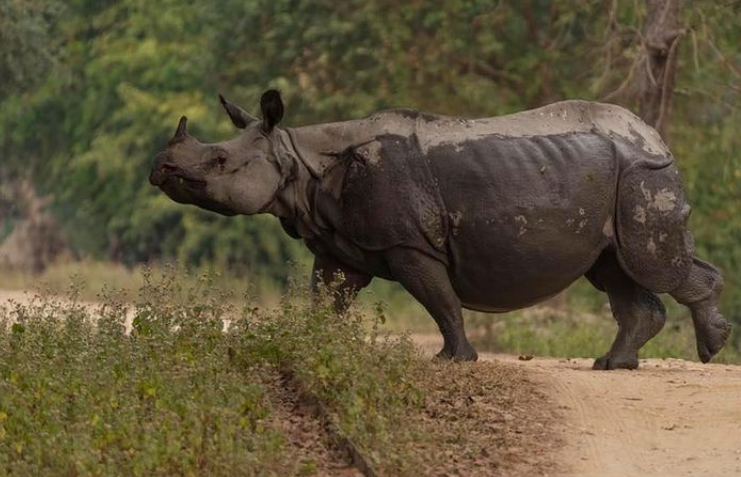India is home to an incredible array of biodiversity, with many species found nowhere else in the world. However, many of these species have been pushed to the brink of extinction due to habitat loss, poaching and other human activities. To combat this crisis, India has launched a species recovery program aimed at protecting and reviving endangered species. Significant populations of these species exist outside Protected Areas moving for dispersal from their natal habitats or for seasonal migrations.
When did the Species Recovery Program start?
The erstwhile Ministry of Environment and Forest scheme of ‘Assistance for the Development of National Parks and Sanctuaries’ was reformulated and renamed as ‘Integrated Development of Wildlife Habitats (IDWH)’ during the 11th Plan period (2007-2012). The MoEF, in consultation with Wildlife Institute of India and other scientific institutions/ organizations, identified 16 terrestrial and 6 aquatic species with the objective of saving critically endangered species/ecosystems to ensure their protection outside Protected Areas, across the wider landscape/seascape
Species Recovery Plans were prepared for several of these species. The Lion (Panthera leo persica) and Rhinoceros (Rhinoceros unicornis) populations are showing an increasing trend, and the Sangai (Rucervus eldii eldii) and Hangul (Cervus elaphus hanglu) populations are stable; but the populations of the Great Indian bustard (Ardeotis nigriceps) and the Nicobar megapode (Megapodius nicobariensis) have recorded declines. Vulture populations, in particular Gyps bengalensis, that had declined substantially in recent times have registered a small upward trend, indicating that conservation measures taken for the species are showing a positive outcome. Efforts are underway for developing protocols for monitoring the status and trends of the remaining IDWH species.
Which species are included?
1. Asian Wild Buffalo
2. Asiatic Lion
3. Brow-Antlered Deer or Sangai
4. Dugong
5. Edible Nest Swiftlet
6. Gangetic River Dolphin
7. Great Indian Bustard
8. Hangul
9. Indian Rhino or Great One-horned Rhinoceros
10. Jerdon’s Courser
11. Malabar Civet
12. Marine Turtles (entire group of species found in India)
13. Nicobar Megapode
14. Nilgiri Tahr
15. Snow Leopard
16. Swamp Deer
17. Vultures (entire group of species found in India)
18. Northern River Terrapin
19. Clouded Leopard
20. Arabian Sea Humpback Whale
21. Red Panda
22. Caracal
How successful has the Species Recovery Program been?
Here are few of achievements of the program demonstrating the effectiveness of conservation efforts –
- Bengal Tiger: The Indian government’s efforts to protect the Bengal tiger have resulted in a significant increase in their population. The 2018 tiger census estimated a total of 2,967 tigers in the country, up from 1,411 in 2006.
- Indian Rhino: The one-horned Indian rhinoceros was once on the brink of extinction, with only a few dozen individuals remaining in the early 20th century. Thanks to our hard work, the conservation efforts resulted in the population rising to over 2,500 individuals today.
- Asiatic Lion: The Asiatic lion was also on the brink of extinction, with only about 20 individuals remaining in the wild in the early 20th century. Today, their population has increased to over 500 individuals due to conservation efforts.
- Indian Elephant: The Indian elephant population has also increased due to conservation efforts, with the 2017 census estimating their population at around 30,000 individuals.
- Indian Vulture: There was a dramatic decline in the population of the Indian vulture due to the use of a drug named diclofenac (used to treat livestock). However, with successful captive breeding programs & the implementation of a ban on diclofenac, their population has started to recover. We still need miles to go to bring back a healthy population of Vultures.

How can the Species Recovery Program be improved?
While the Indian species recovery program has had some notable achievements, there are several areas in which it could be improved.
- Increased funding: The program needs more funding to support conservation efforts, including research, monitoring, and enforcement.
- Enhanced enforcement: There is a need for stronger enforcement of wildlife protection laws to combat activities like illegal wildlife trade, poaching, habitat destruction etc.
- Better coordination between different agencies involved.
- Addressing human-wildlife conflict: There is a need to develop effective strategies to reduce conflicts between humans and wildlife, which can lead to negative attitudes towards conservation efforts.
- More Community participation across India. Few protected areas like Periyar Tiger Reserve have done a great job in this regard and the similar approach needs to be taken at other places too.
Overall, addressing these areas of improvement is crucial for the Indian species recovery program to continue to be effective in protecting and recovering threatened species.
Conclusion
India’s Species Recovery Program has shown great success in protecting and recovering threatened species. However, we have miles to go to address ongoing threats which are challenging but crucial to be addressed. By addressing key areas for improvement, such as increased funding, better coordination, and community participation, the program can continue to build on its successes and make further progress in conserving India’s rich biodiversity for future generations.
Help us Help Them! Think Wildlife Foundation is a non profit organization with various conservation initiatives. Our most prominent campaign is our Caring for Pari intiative. Pari is a rehabilitated elephant at the Wildlife SoS Hospital. 25% of the profits from our store are donated to the elephant hospital for Pari. Other than buying our wonderful merchandise, you could donate directly to our Caring For Pari fundraiser.
Written by: Ram Dayal Vaishnav
